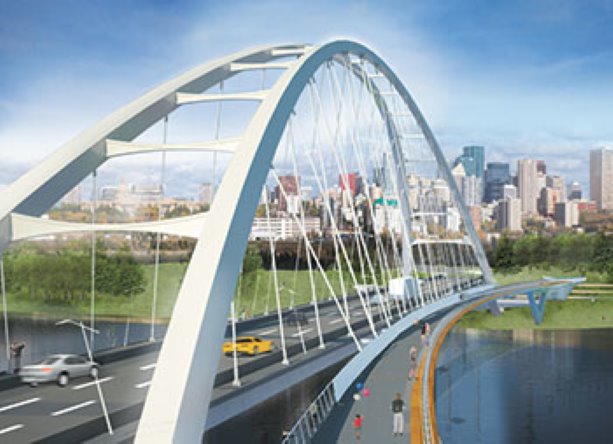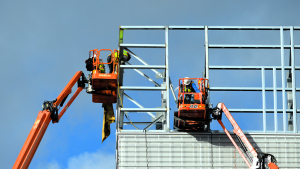Pre-construction work is ramping up for the replacement of Walterdale Bridge in Edmonton, Alberta, however, First Nations activists are protesting the cultural and historical impact of the project.
“The main concern that everyone has about this project, including myself and the City of Edmonton, is we want to avoid encountering an interned grave feature,” said Gareth Spicer, a private consulting archaeologist with Turtle Island Cultural Resource Management.
“This is the primary concern for all 21 communities involved in the public consultation process for the project.”
City of Edmonton crews started tree removal on both sides of the Saskatchewan River for the new Walterdale Bridge on Jan. 2 and the prequalification process for general contractors is expected to be completed this month.
The start of this work is an important milestone because it will allow first phase river berms to be built over the next couple of months.
It also allows for temporary access roads that will be required for the construction of the new bridge.
The Idle No More Movement held a fire ceremony at the Fort Edmonton Cemetery to show solidarity with Chief Spence on Dec. 29, who is on a liquid diet to draw attention to First Nations issues and rights.
The protestors decided to gather at the early 19th century cemetery because they are upset the new bridge is being built over a memorial and through a section of the historic cemetery.
The memorial honours the lives and spirits of First Nations, Métis, French Canadian and European settlers, who laid the foundations for the City of Edmonton.
As part of the process of replacing the Walterdale Bridge, the City of Edmonton is consulting with 21 Aboriginal communities, whose ancestors lived or travelled to the Edmonton area since the fur trade.
City of Edmonton communications officer Graeme McElheran said construction next to the cemetery and burial grounds required a boundary change and relocation of information panels.
However, the new bridge will not displace the memory circle, reinterment area and historic graveyard.
“One reason for building the new bridge right next to the old bridge is because the land has already been disturbed” said McElheran.
“Over the years, the planned construction site has been developed and redeveloped, beginning with the establishment of Fort Edmonton, John Walter’s ferry and construction of the existing bridge.”
For this reason, he argued that the chance of encountering human or other archaeological remains in the construction area is remote.
Spicer said he conducted backhoe testing or controlled excavation for one year ending in October 2012 to minimize those odds even further.
Human bones and intact graves have been uncovered next to the historic graveyard since the 1940s due to the development of a utility corridor, including an Epcor facility.
Given this fact, Aboriginal ceremonial protocol will be carried out prior to and as an ongoing part of the construction process.
According to Jaimy Miller, spokesperson for the City of Edmonton Aboriginal Relations Office, a protocol has been developed to deal with any human remains that are identified during construction.
This involves stopping all construction activity in the immediate area, an investigation by a specialized historical resource consultant and the re-internment of the remains within the boundaries of the historic cemetery.
Currently, a public meeting is scheduled for Feb. 7 at the Old Timers’ Cabin for the project team to present the final detailed design, construction timelines and detours during construction.
The project team completed the detailed design phase in December 2012, using preliminary engineering results to define and detail the construction scope of the project.
Design work includes the final bridge design, alignment, construction lay-down areas, associated road and shared use path connections, utility relocations, and requirements to protect cultural heritage and the environment.
During the preliminary engineering design phase, three arch bridge alternatives for the new structure were explored.
The recommended option is a design with two separate twin arches and a shared-use path on the east side.
The City of Edmonton is seeking a design that can be constructed at a capital cost of $132 million.
An assessment of the condition of the bridge, which was completed in 2000, developed a rehabilitation plan to extend existing life by 10 years.
In 2004, extensive rehabilitation was completed to extend the bridge to 2014, when it will be decommissioned for use by automobiles.
Construction of the Walterdale Bridge, which was previously known as the Fifth Street Bridge, was undertaken in 1912-13.
The bridge was built to replace a ferry operation, which was established in 1882 by a shipwright named John Walter.
If you would like to see a building report about the Walterdale Bridge project, please click here.











Recent Comments
comments for this post are closed